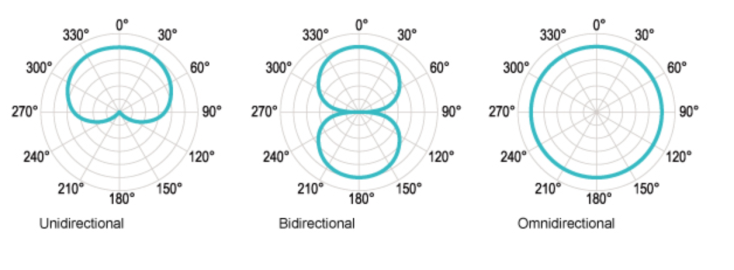Talk about the shots in the showreel. Why are the shots in the showreel? To show technical ability and creativity, composition?
Example
Essentially if there’s a shot in the showreel you need to explain why it is there and give it technical, creative and compositional backing up.
Shot one: Bokehs – This shot shows experimentation with low key lighting and aperture.
Shot two: Large Vars – This shot shows experimentation with Shutter speed and high fps recording. and follows the rule of thirds with a horizon line.
Shot three: Glass red fluid rising and filling – This shot shows further experimentation with Shutter speed and high fps recording. and shows correct composition following the rule of thirds as well as being somewhat symmetrical and has leading lines adding interest.
Shot four: Dice being dropped into bubbled water – This shot shows experimentation with lowkey lighting and shutter speed. This shot is creatively composted with a horizon line and the top of the water intersects with the top third.
Shot five: Metal Grinding – 400fps – Bokehs – This shot shows creative experimentation with Shutter speed and high fps recording. It correctly follows the rule of thirds. This shot could be used in some kind of client video which shows a possible advertisement to clients.
Shot six: Metal Grinding – 800fps – Bokehs – This shot shows creative experimentation with Shutter speed and high fps recording. It correctly follows the rule of thirds. This shot could be used in some kind of client video which shows a possible advertisement to clients.
Shot seven: Metal Grinding – 800fps – Bokehs – This shot shows creative experimentation with Shutter speed and high fps recording. It correctly follows the rule of thirds. This shot could be used in some kind of client video which shows a possible advertisement to clients.
Shot eight: Picking up dice and dropping it – This shot follows compositional rules such as rule of thirds and a horizon line. It shows creative experimentation with low key lighting. It also shows creative experimentation with high shutter speed and fps recording.
Shot nine: Typing shot – This shot shows creative experimentation with the creative use of soft natural lighting, is reasonably well framed and shows experimentation with the technical and creative use of the atmos ninja blade.
Shot ten: Snow Shot – This shot shows creative use of slow-motion High fps and shutter speed. It also shows creative use of composition with a horizon line being the cable and has leading lines in the background.
Shot eleven: Shortfilm – Bedroom shot – This shot shows creative use of technical equipment which is the Ronan. It also shows the creative application fo compositional framing.
Shot twelve: Field shot houses – Exposed for the ground – This shot shows technical ability with correct exposure settings as well as the creative application of it. This shot also shows the creative application of depth of field and focus pushing.
Shot thirteen: Field shot houses – Exposed for the sky – This shot shows technical ability with correct exposure settings as well as the creative application of it. This shot also shows the creative application of depth of field and focus pushing.
Shot fourteen: Field Panning shot – Shows creative use of technical ability – panning motion creates interest in the shot. Also Shows creative application of composition with the rule of thirds and a lower horizon line.
Shot fifteen: Man walking the dog in the field – Shows creative application of framing, leading lines, the rule of thirds.
Shot sixteen: Shot of character chasing another character – Shows creative application of framing, shows creative use of technical ability with the Ronan.
Shot seventeen: Shot of character coming into the room looking around then going out and downstairs – following/tracking shot – Shows creative application of framing and creative use of technical equipment with the shoulder mount.
Shot eighteen: Traffic bokeh’s – shows a creative application of aperture and focus pushing and pulling.
Shot nineteen: Through chair shot – Shows creative application of compositional framing and creative application of focus pushing.
Shot twenty: Shot of sun rays – Shows creative application and experimentation of natural hard lighting hard shadows and exposures.
Shot twenty-one: Tilting down tree shot – Shows creative application of tilting downwards and compositional framing.
Shot twenty-two: Shows creative application of lighting, composition and focus pushing.
Shot twenty-three: – Shows creative application of framing rule of thirds.
Shot twenty-four: – Shows creative application of framing rule of thirds and creative lighting.
Shot twenty-five: – Shows creative application of framing rule of thirds and use of foregrounding the other character.
Shot twenty-six: – Shows creative application of framing rule of thirds and creative lighting.
Shot twenty-seven: – Shows creative application of framing rule of thirds and use of foregrounding the other character.
Shot twenty-eight: – Shows creative application of framing rule of thirds, symmetrical.
Shot twenty-nine: – Shows creative application of framing on the lower third, show creative use of lighting.
Shot thirty: – Shows live performance framing, leading lines.
Shot thirty-one: – Shows live performance framing, the rule of thirds.
Shot thirty-two: – Shows live performance framing, the rule of thirds.
Shot thirty-three: – Shows creative application of camera functions, timelapse, Creative application of technical equipment – lens filters ND and Coloured
Shot thirty-four: – Shows creative application of camera functions, timelapse, Creative application of technical equipment – lens filters ND and Coloured
Shot thirty-five: – Shows creative application of camera functions, timelapse, Creative application of technical equipment – lens filters ND and Coloured
Shot thirty-six: – Shows creative application of camera functions, timelapse, Creative application of technical equipment – lens filters ND and Coloured
Shot thirty-seven: – Shows creative application of framing rule of thirds and exposure.
Shot thirty-eight: – Shows creative application of framing rule of thirds and exposure and tilting upwards motion.

